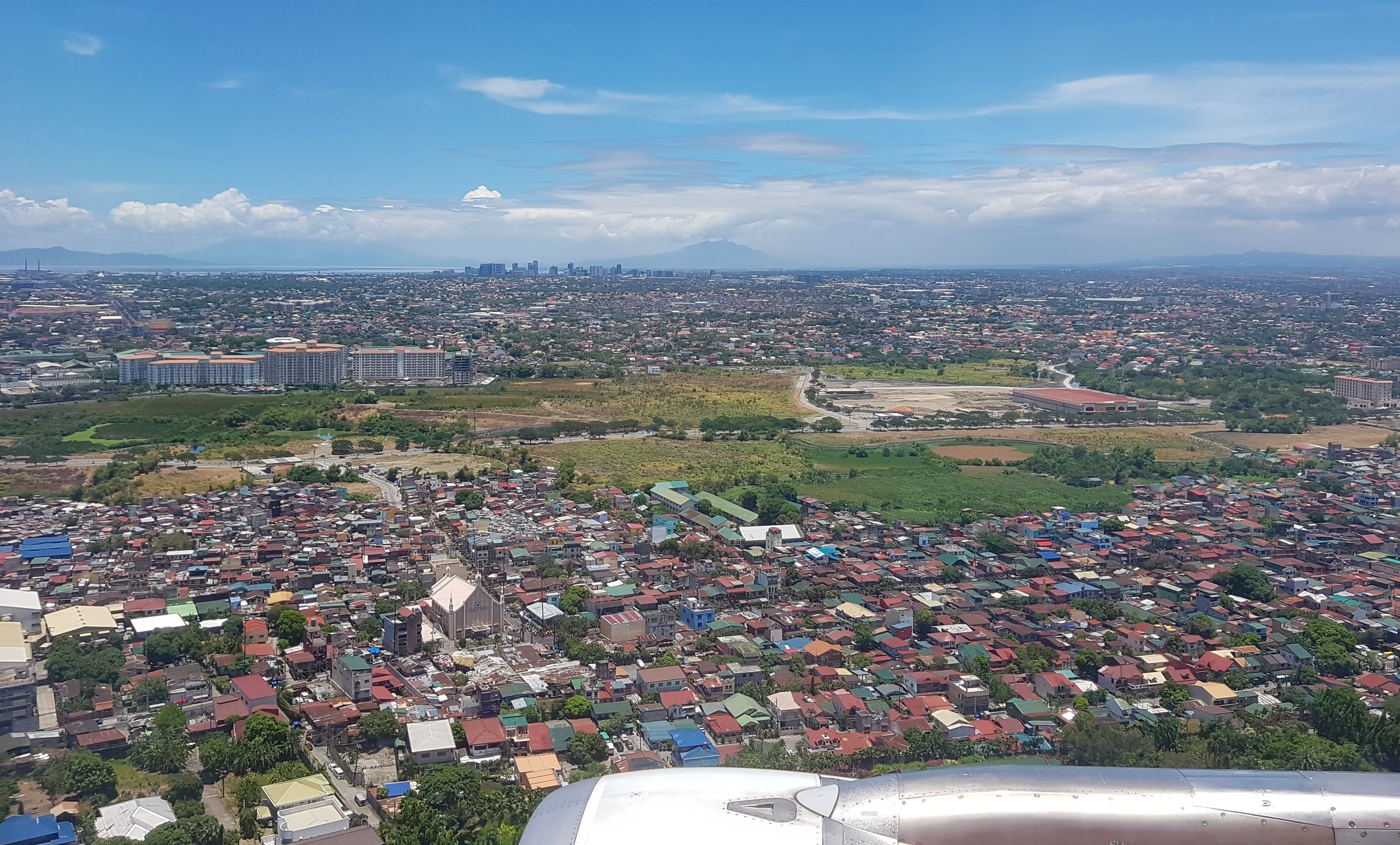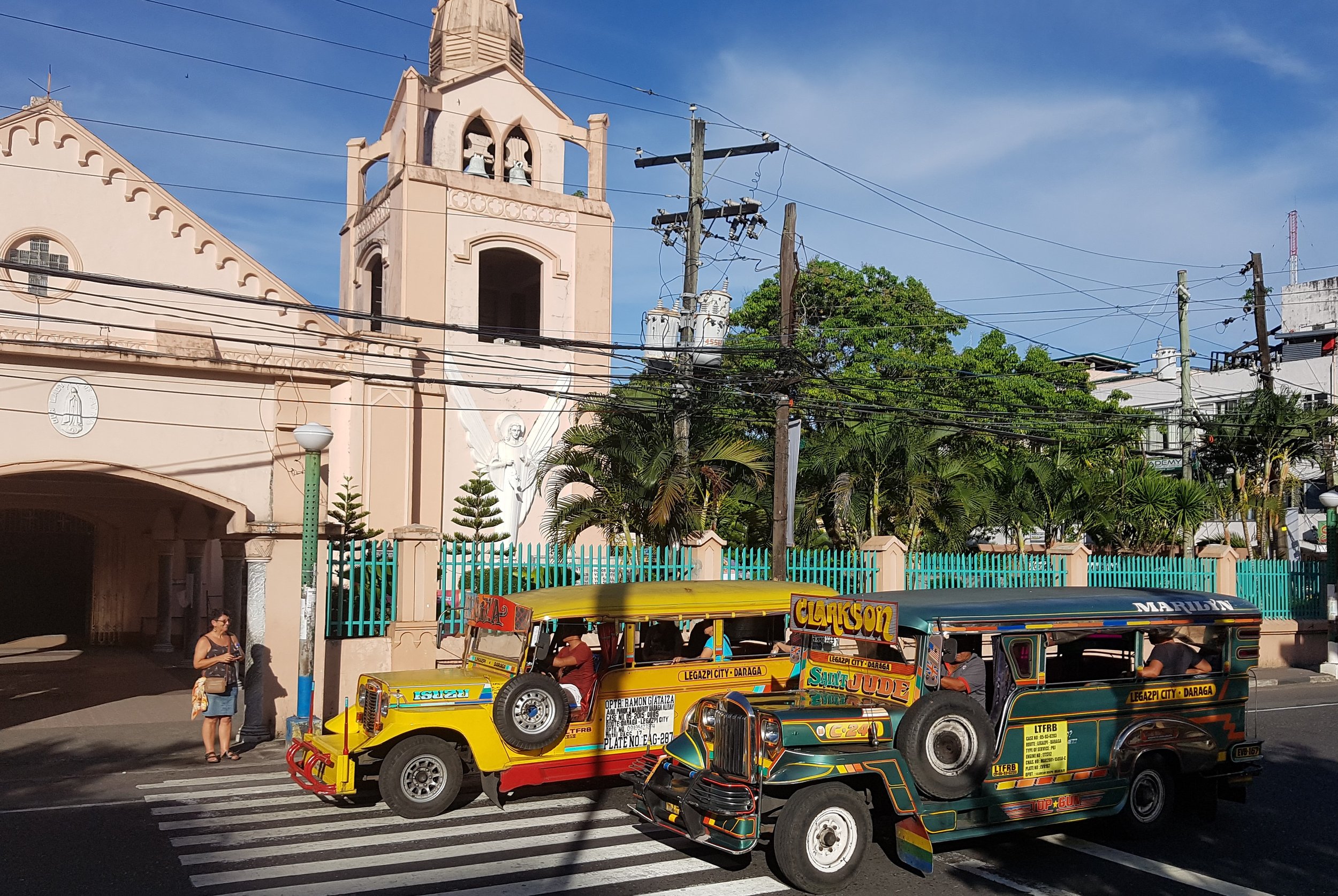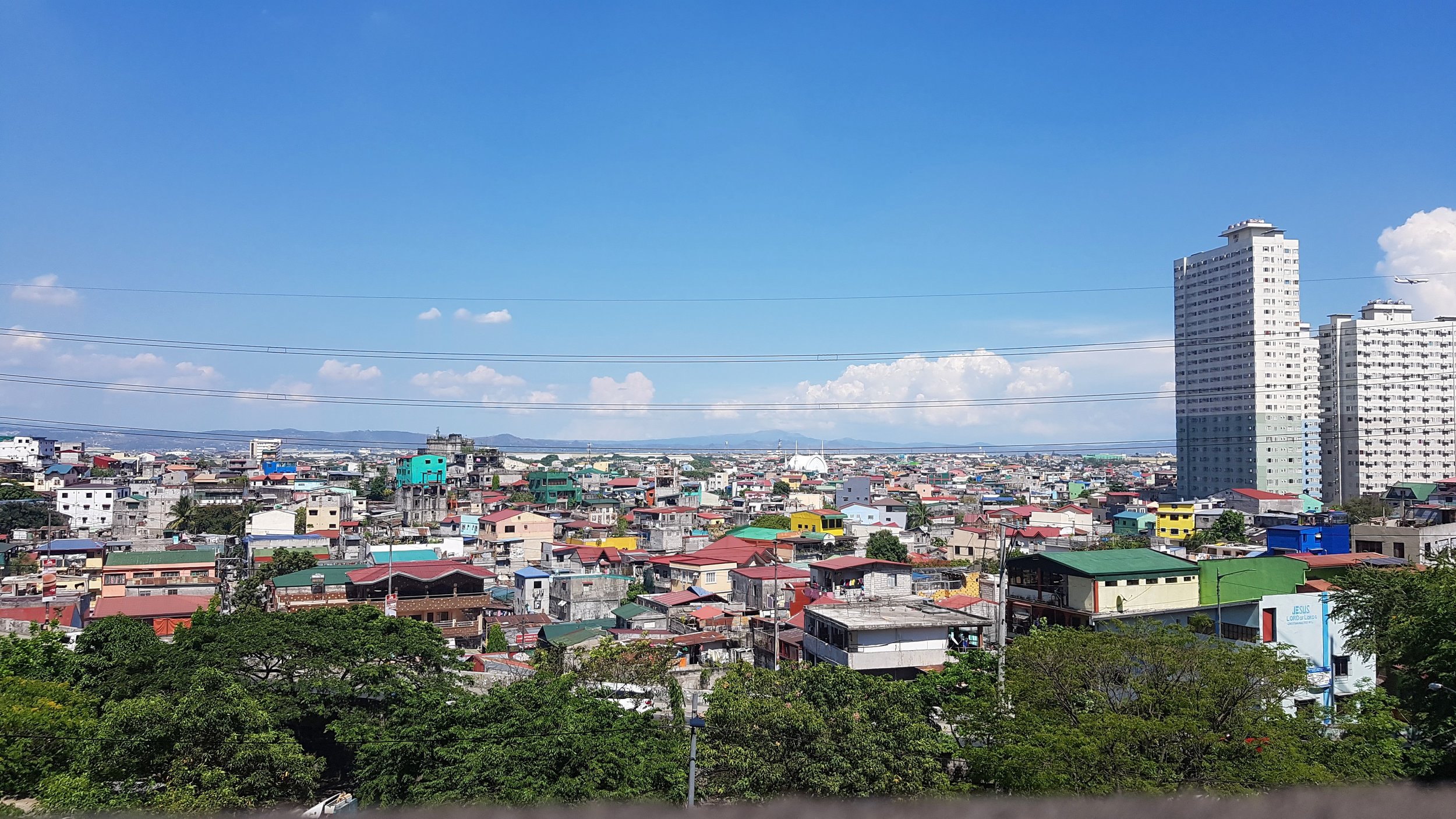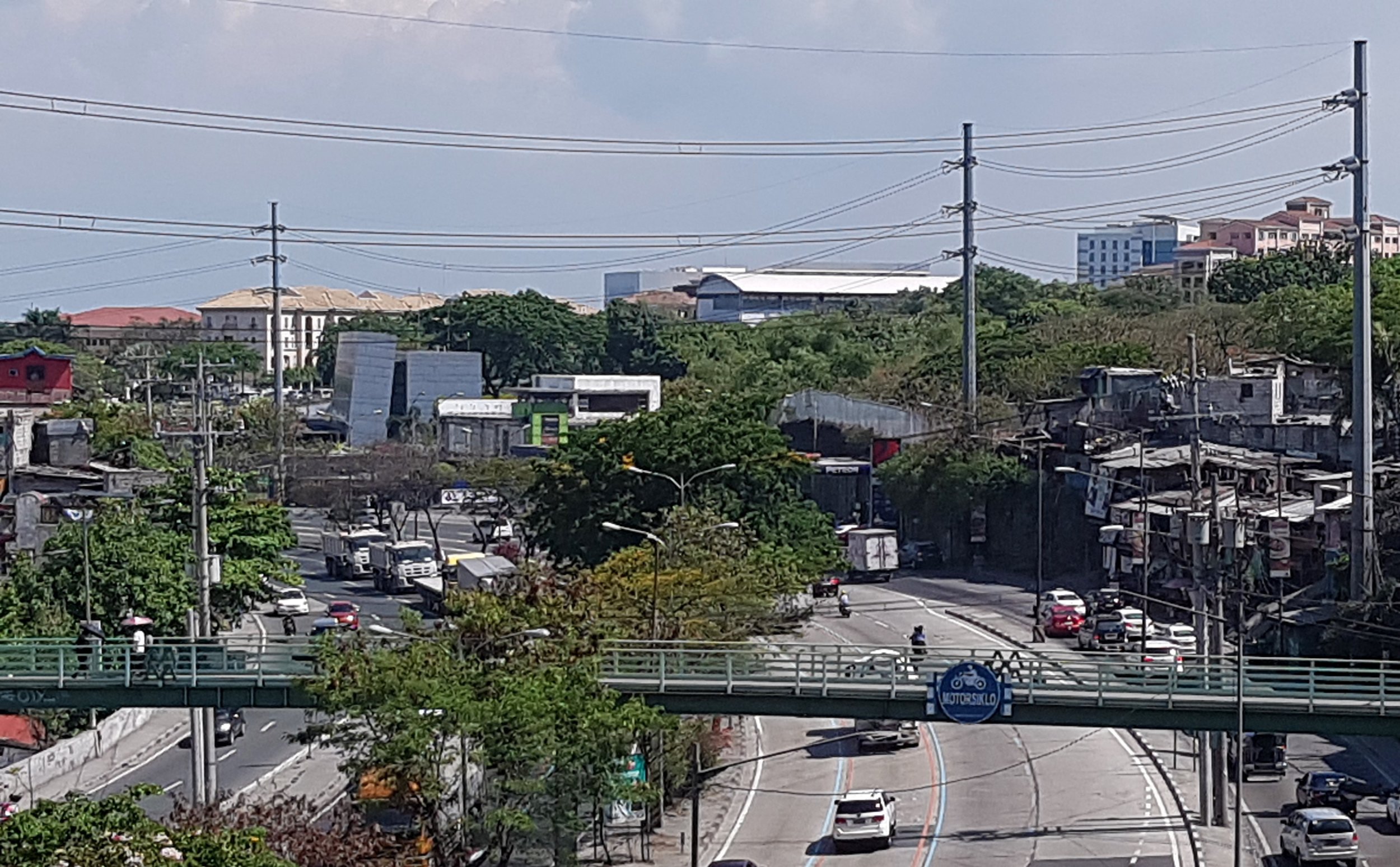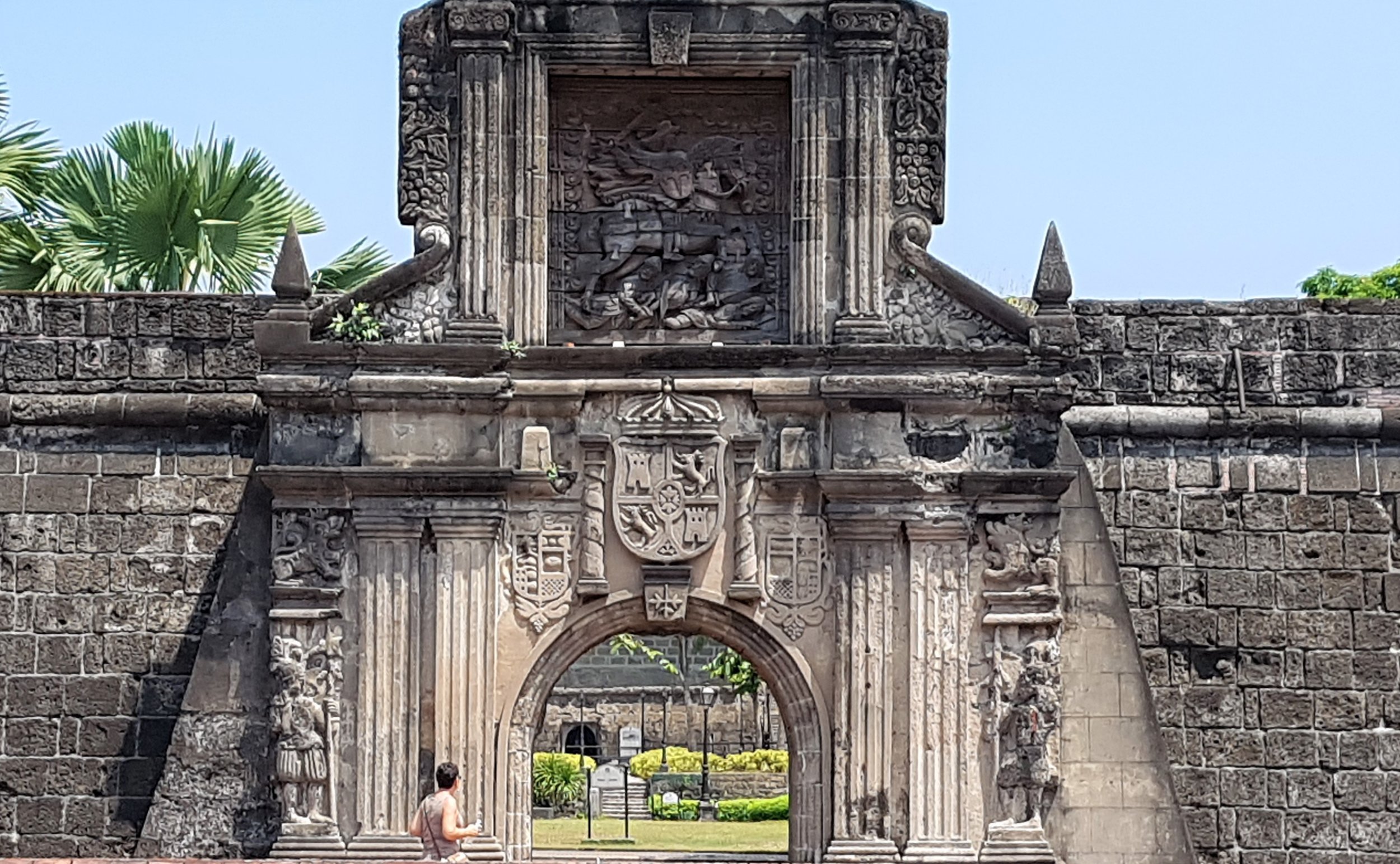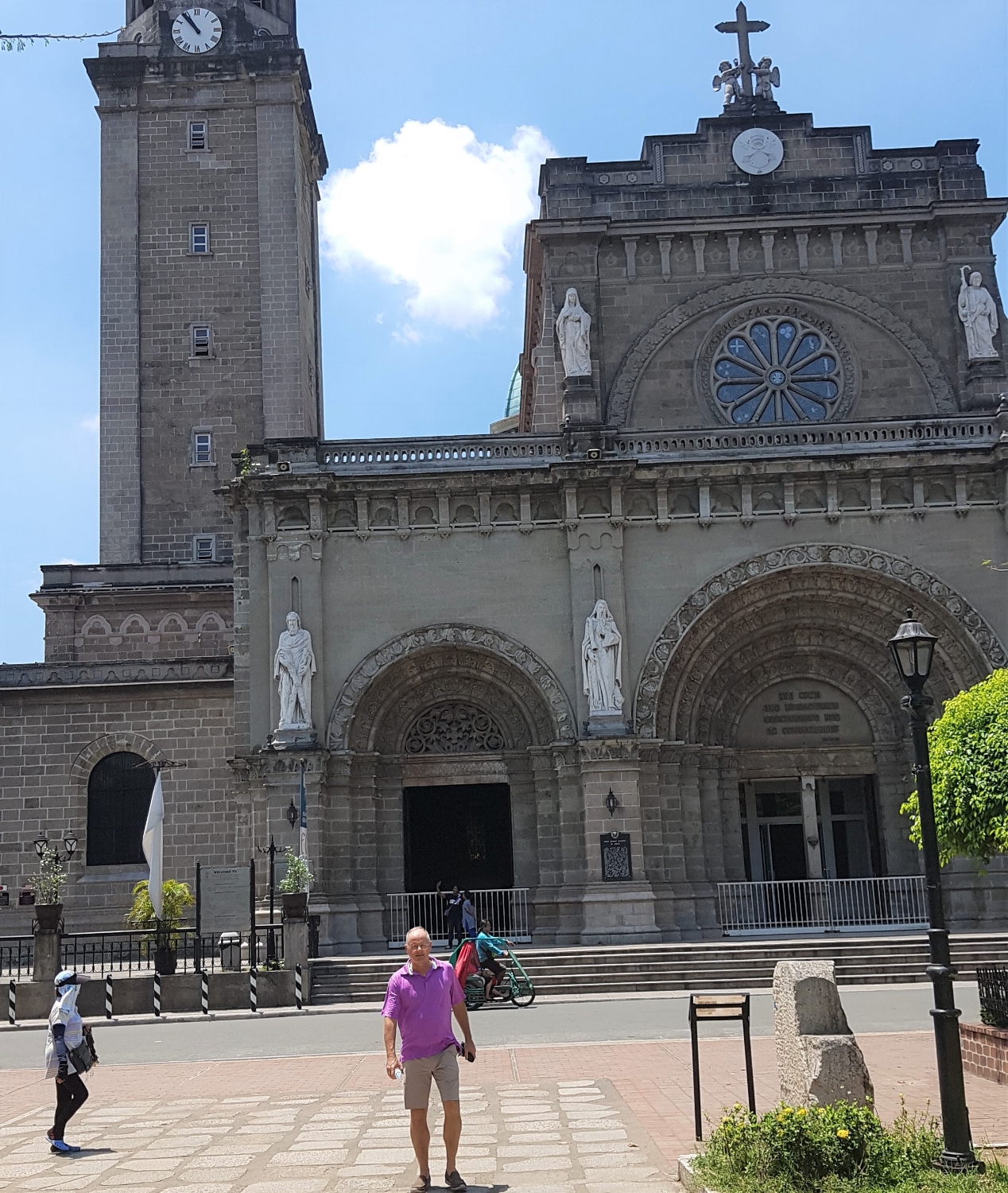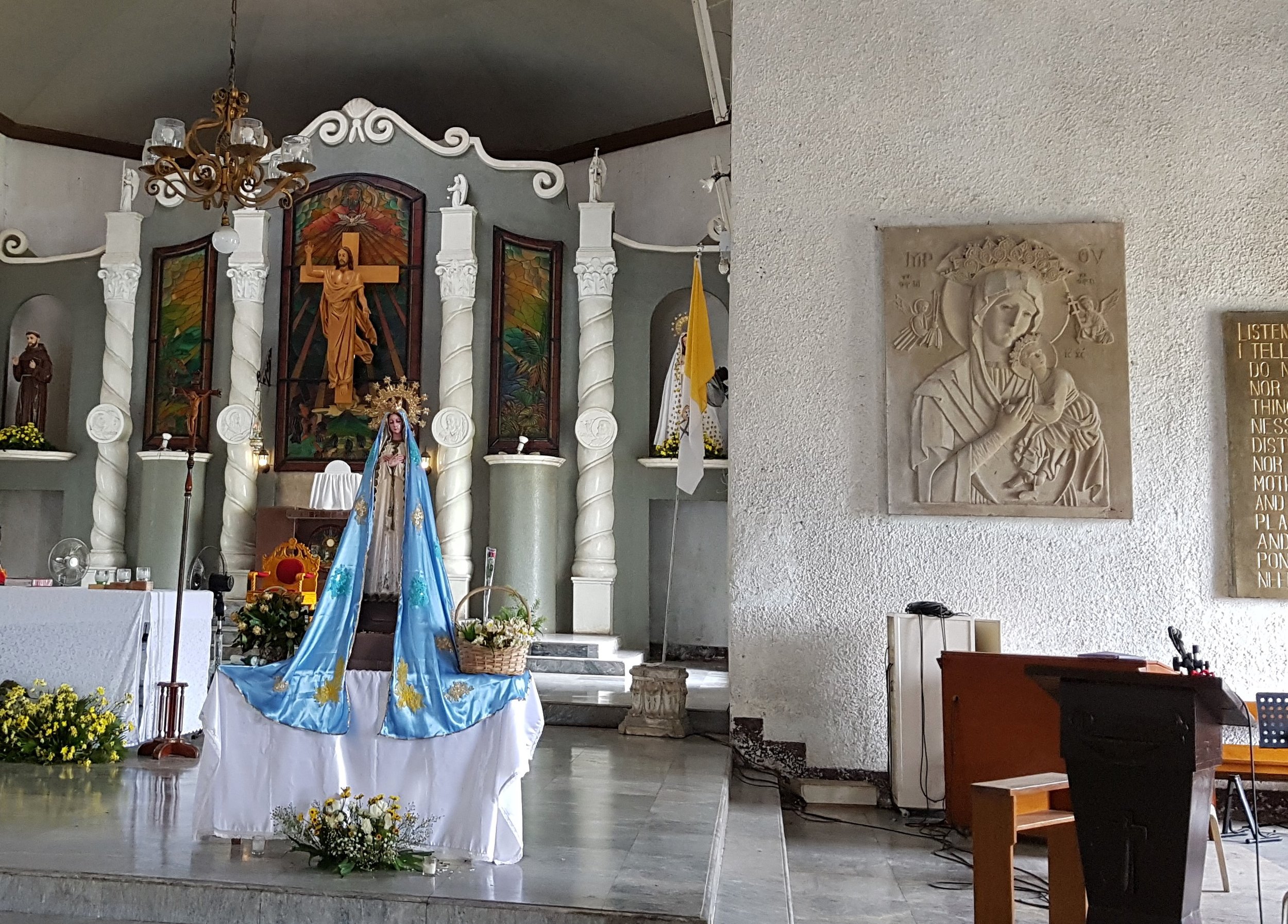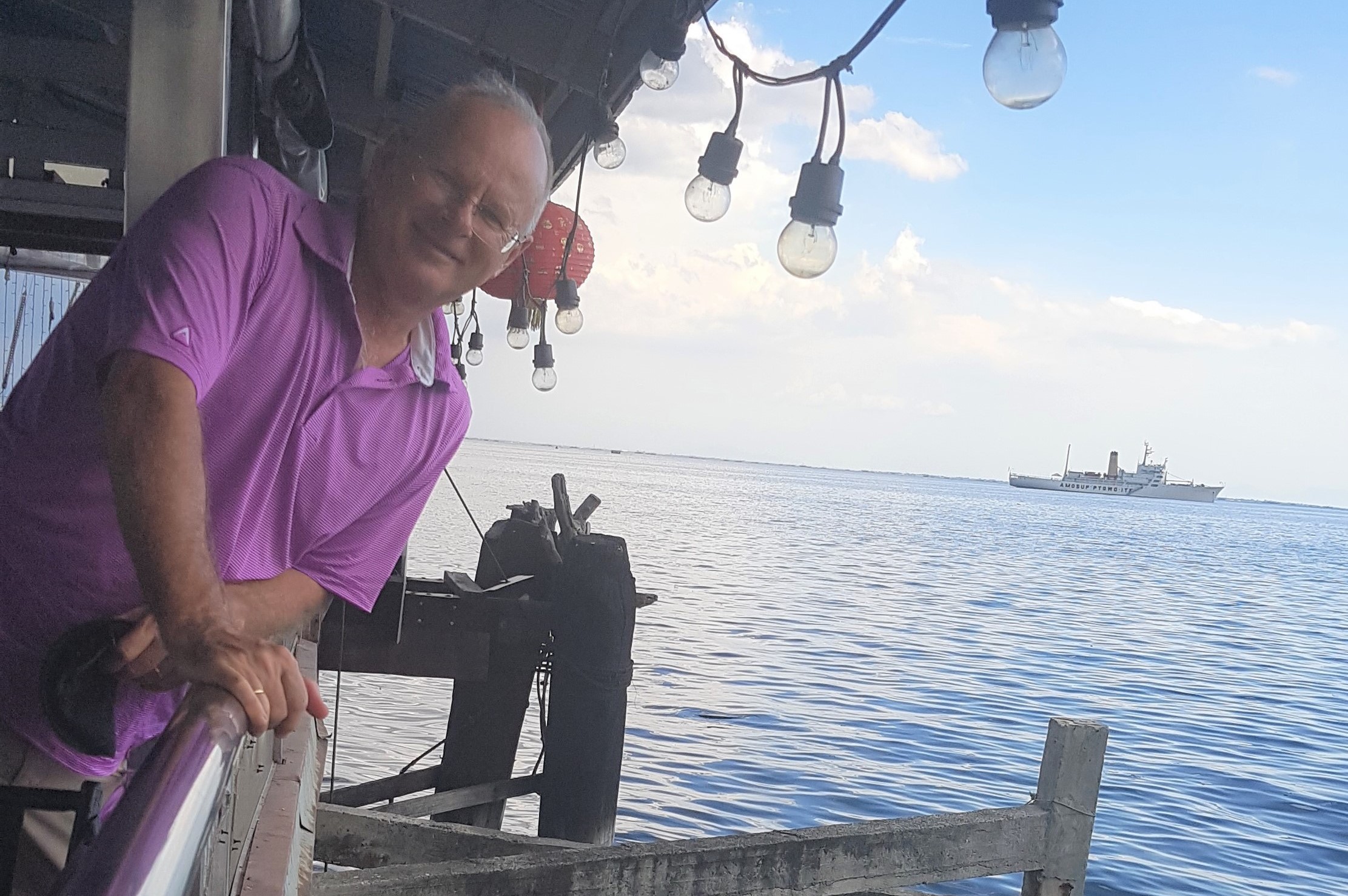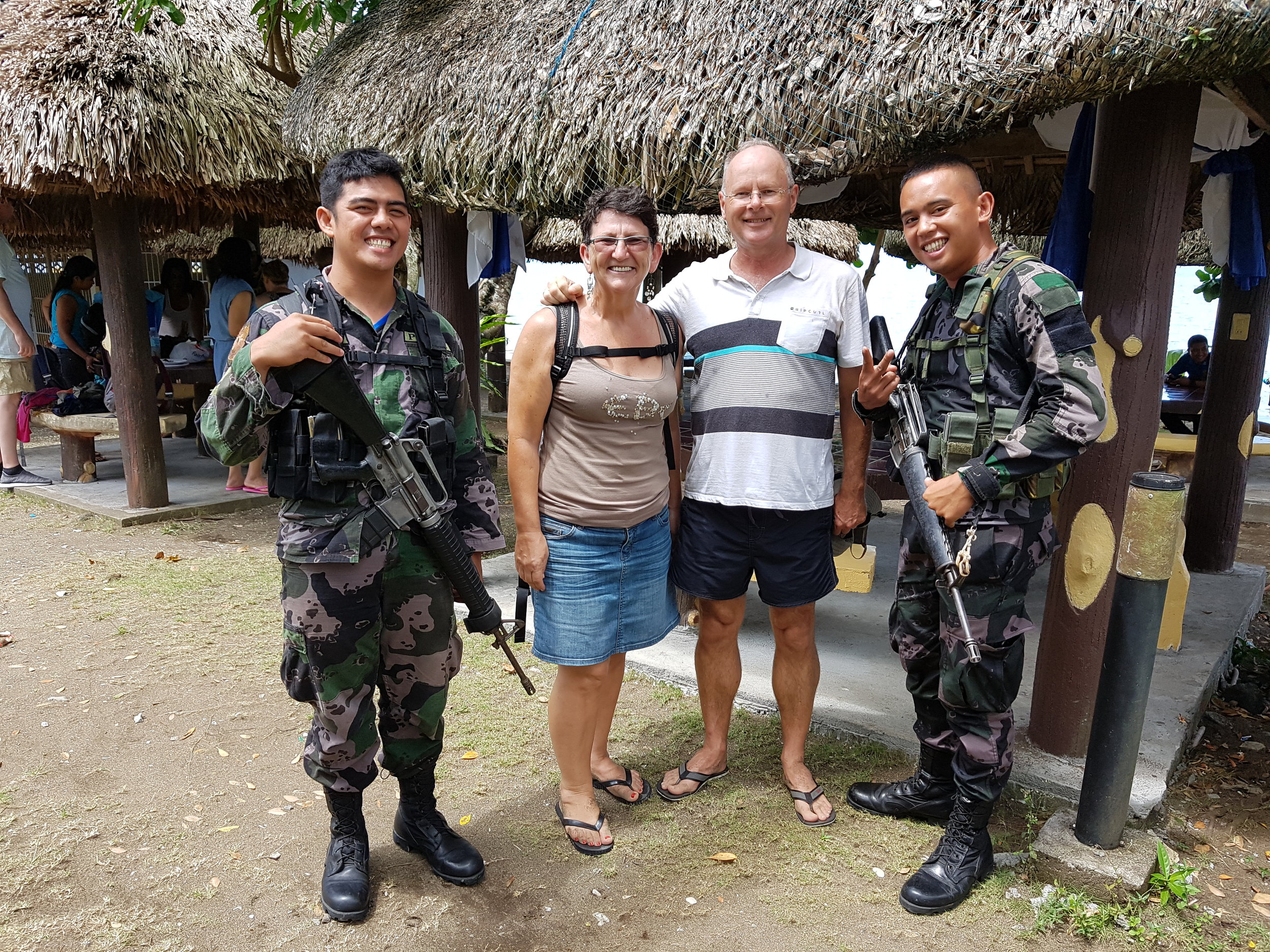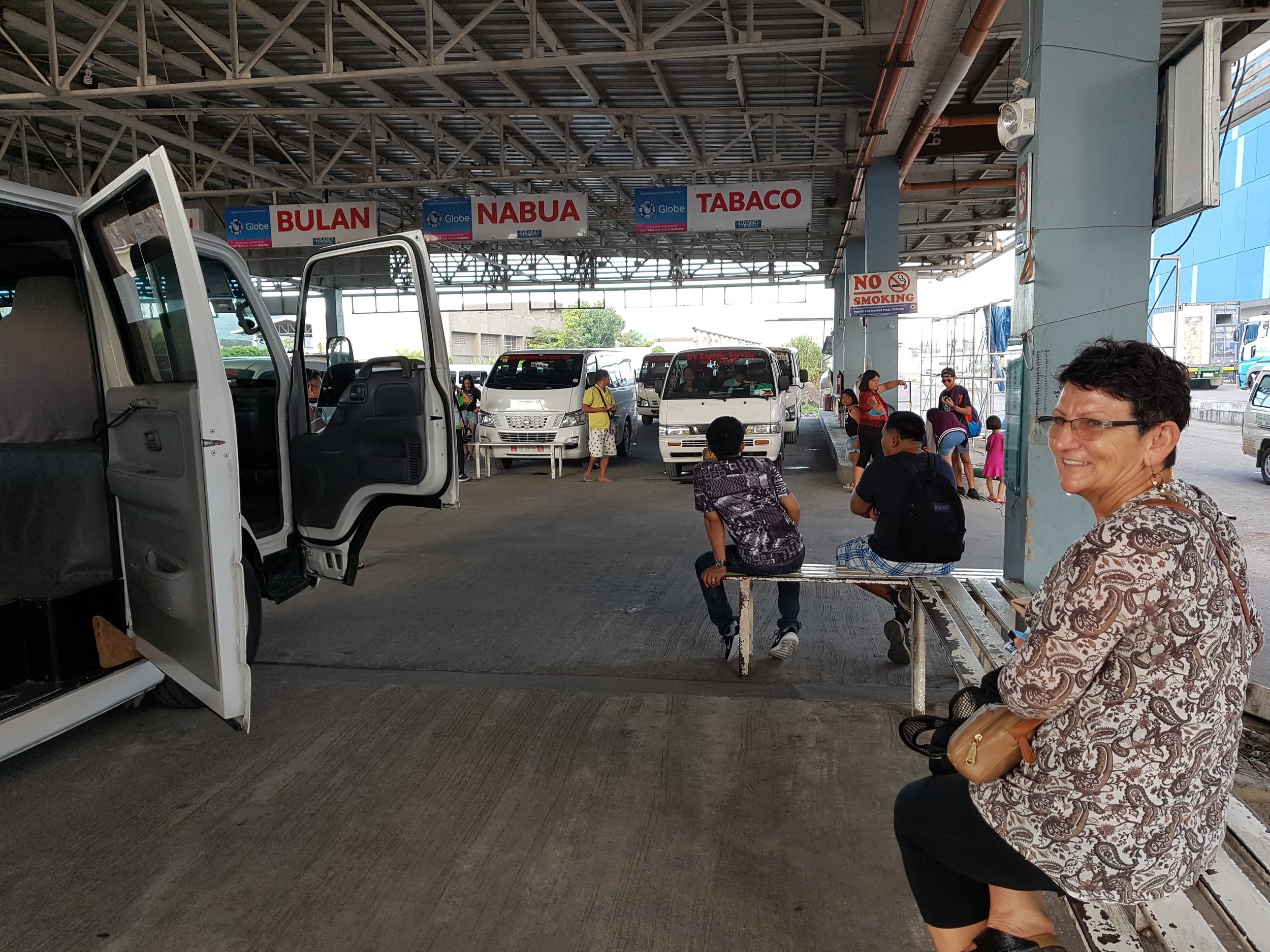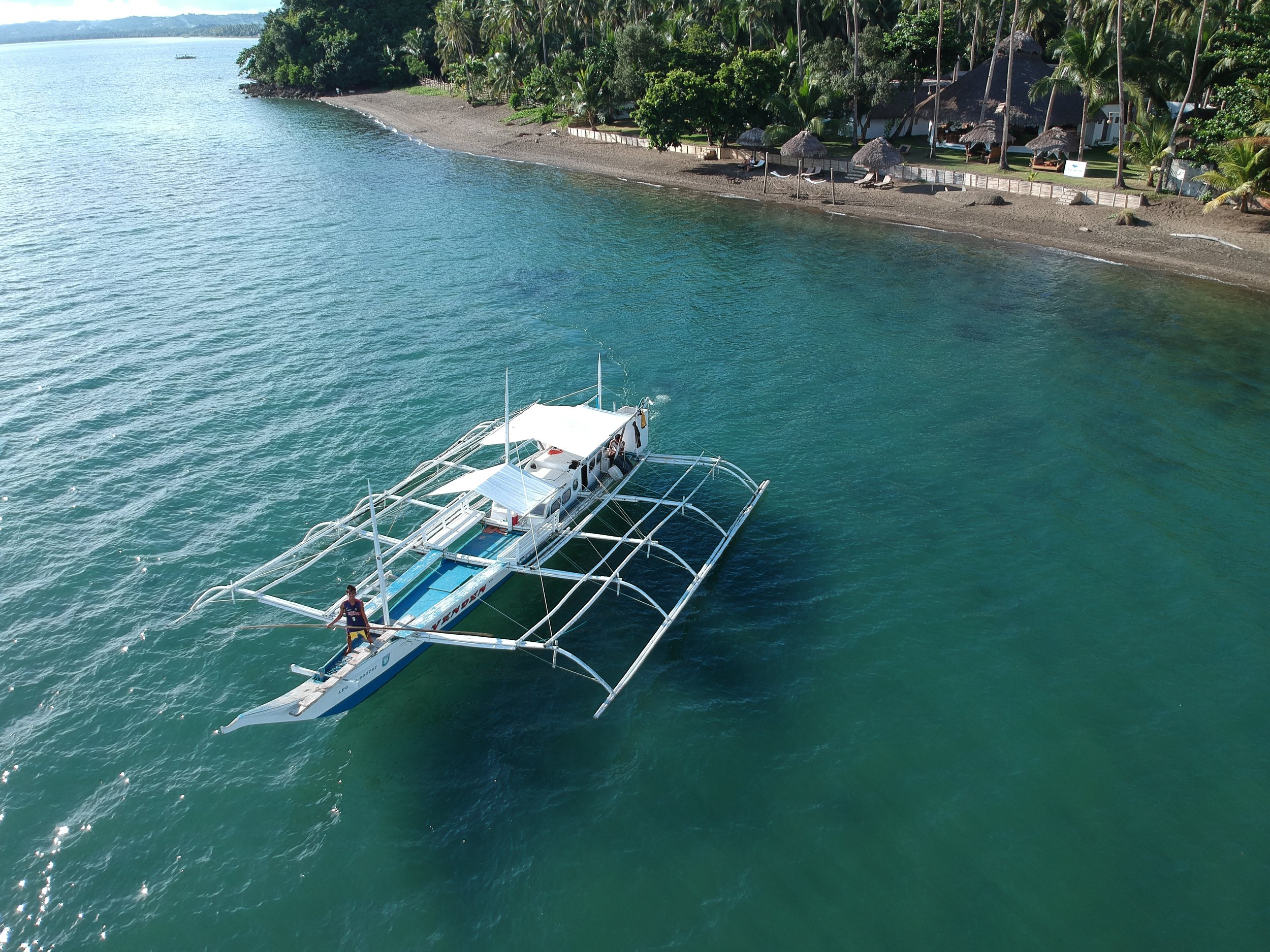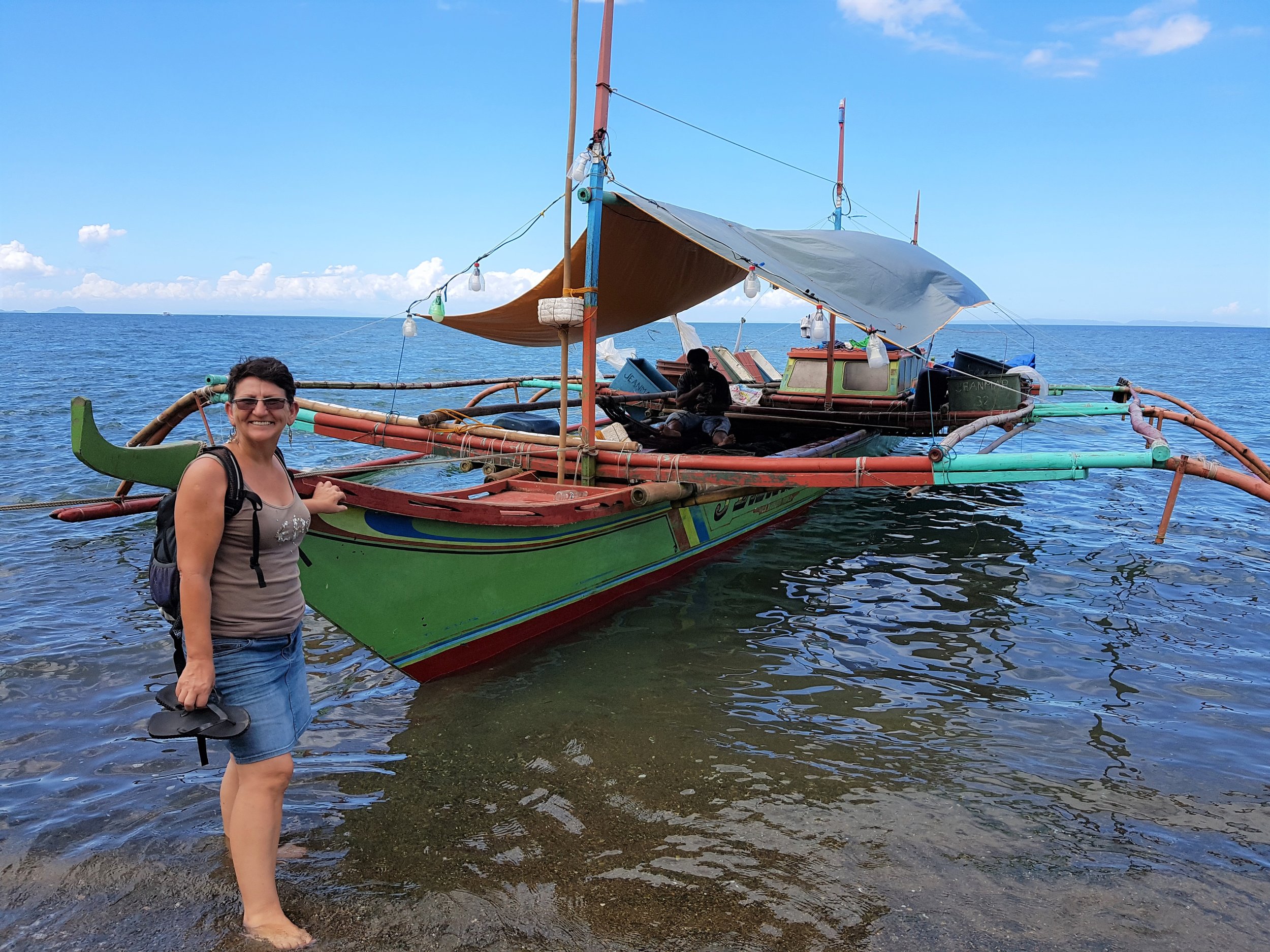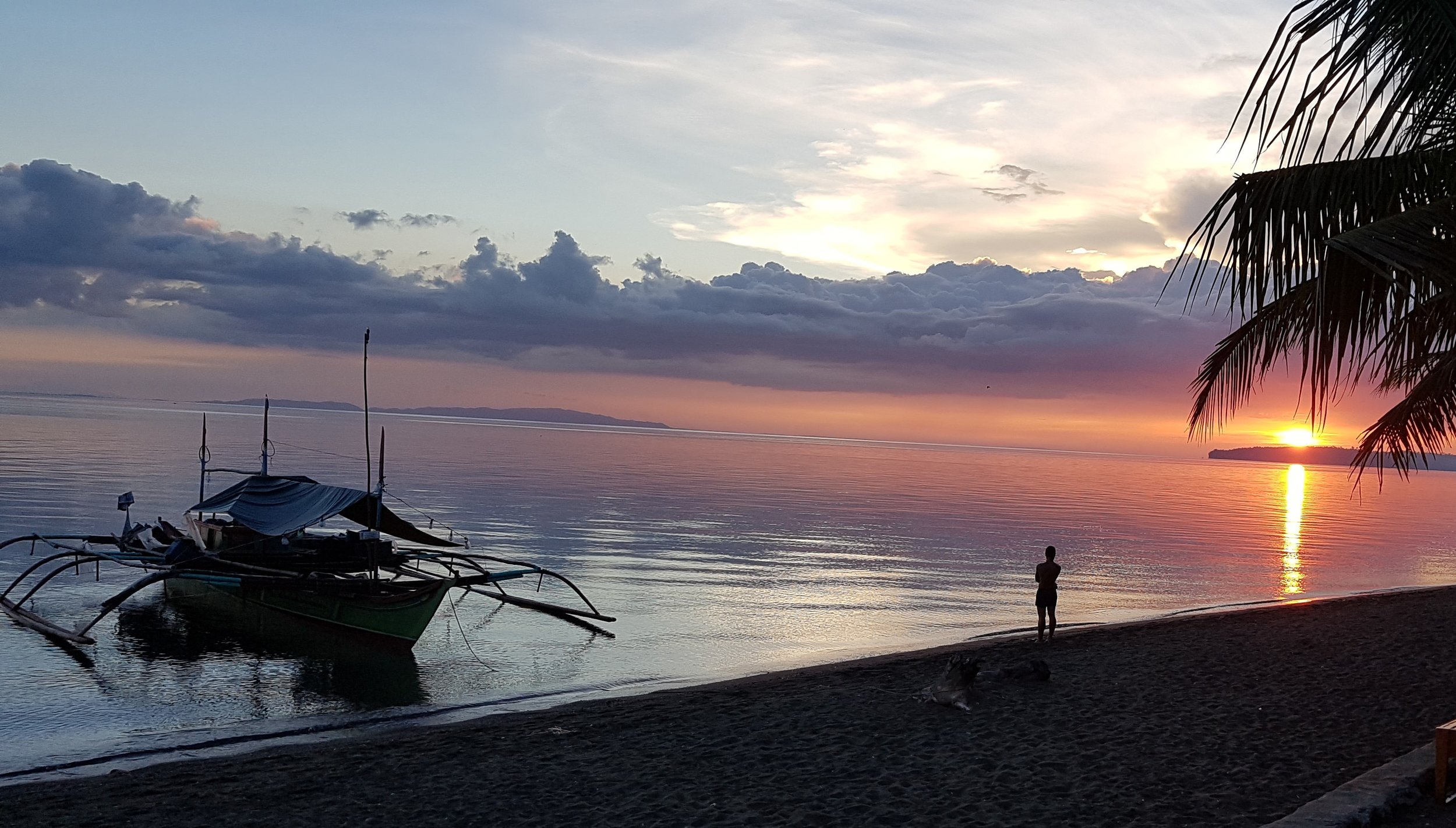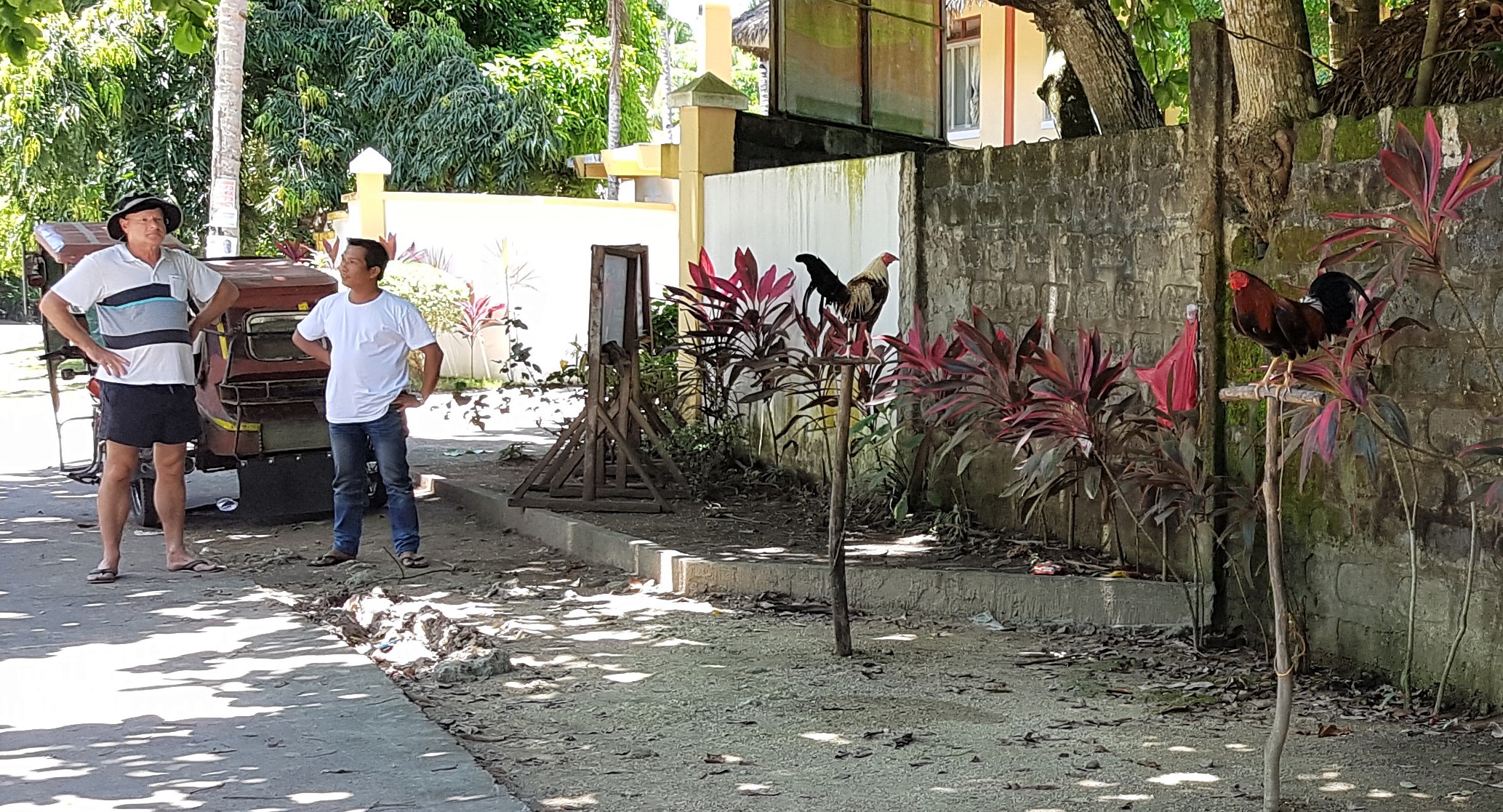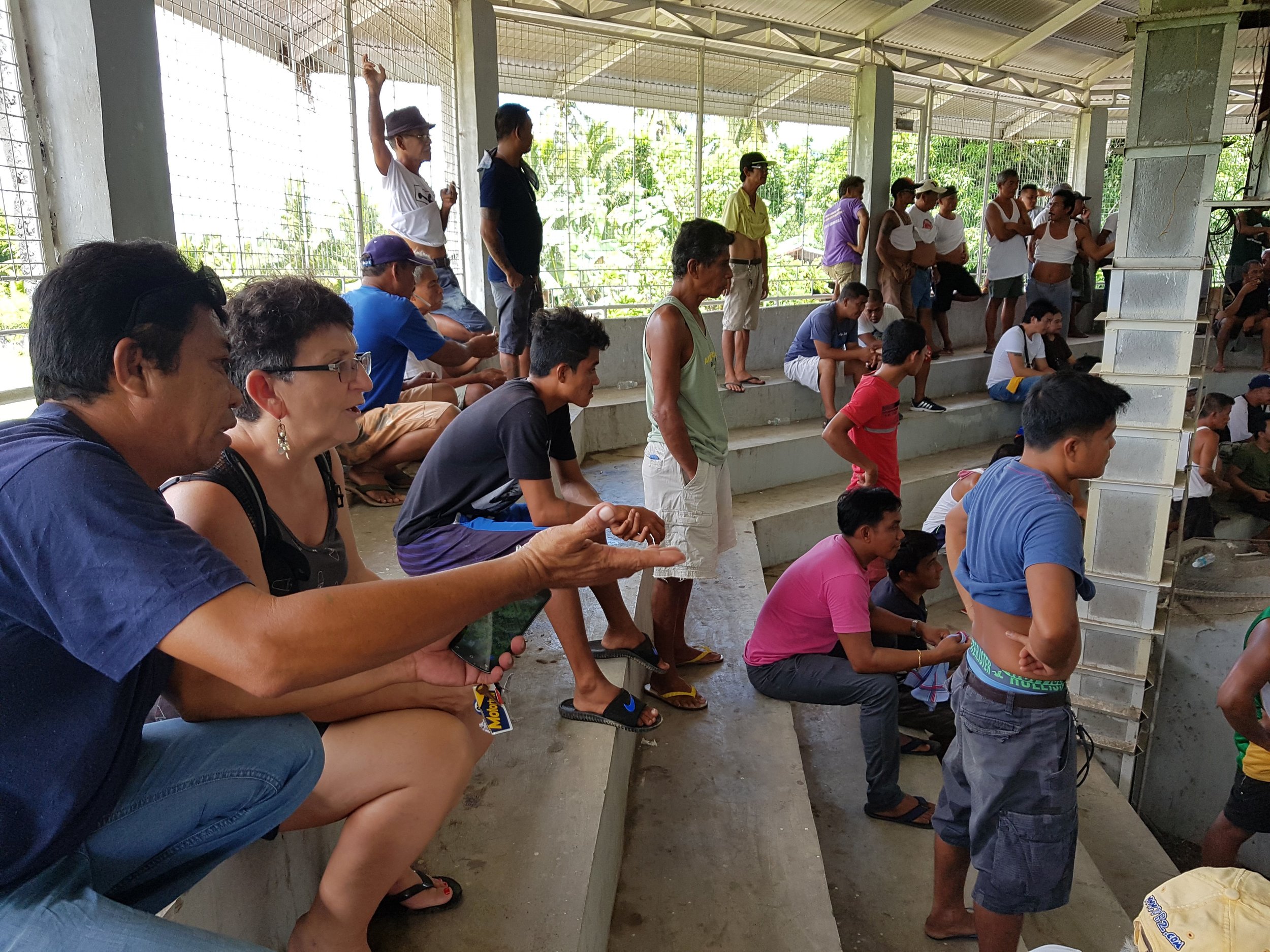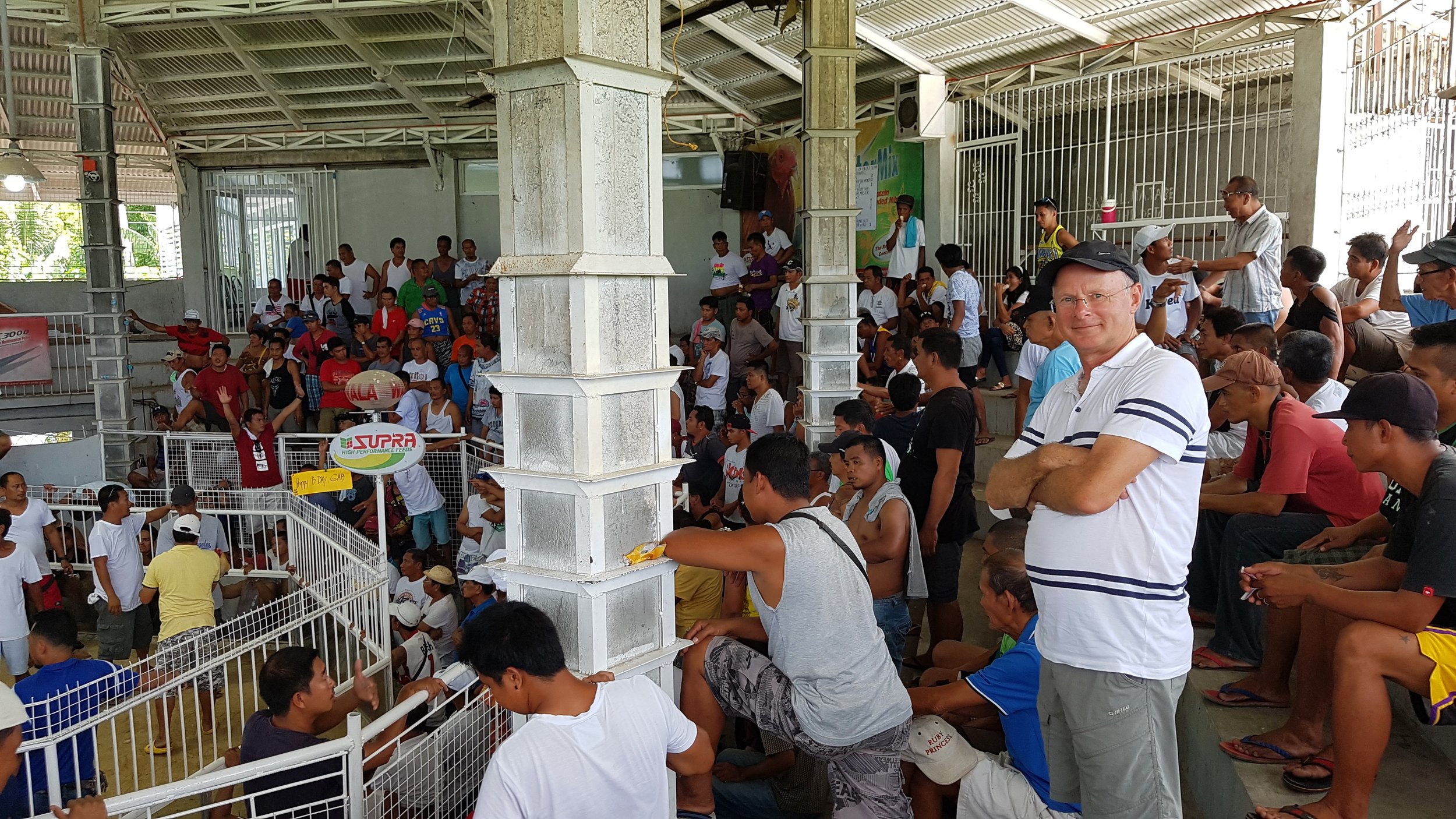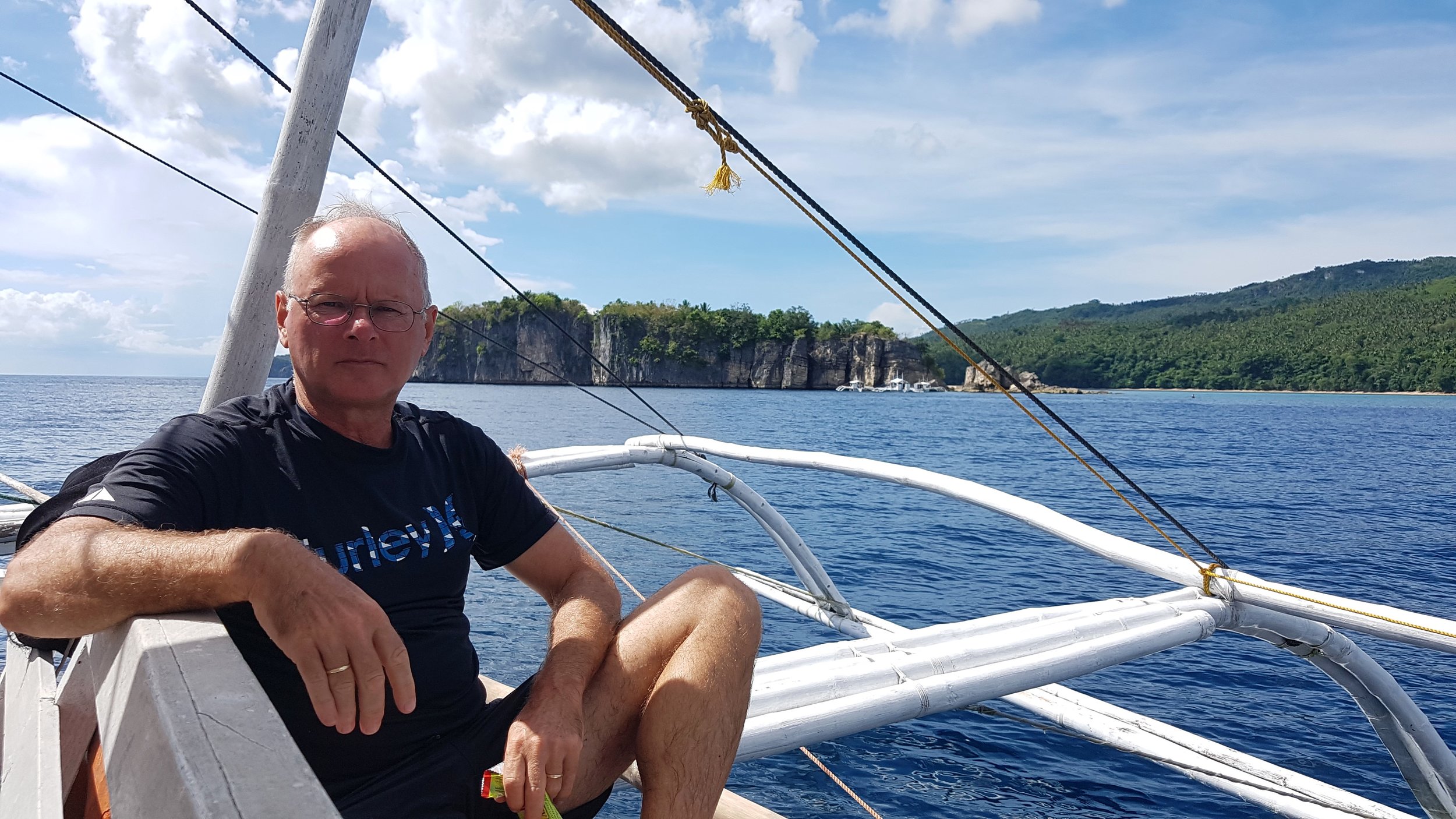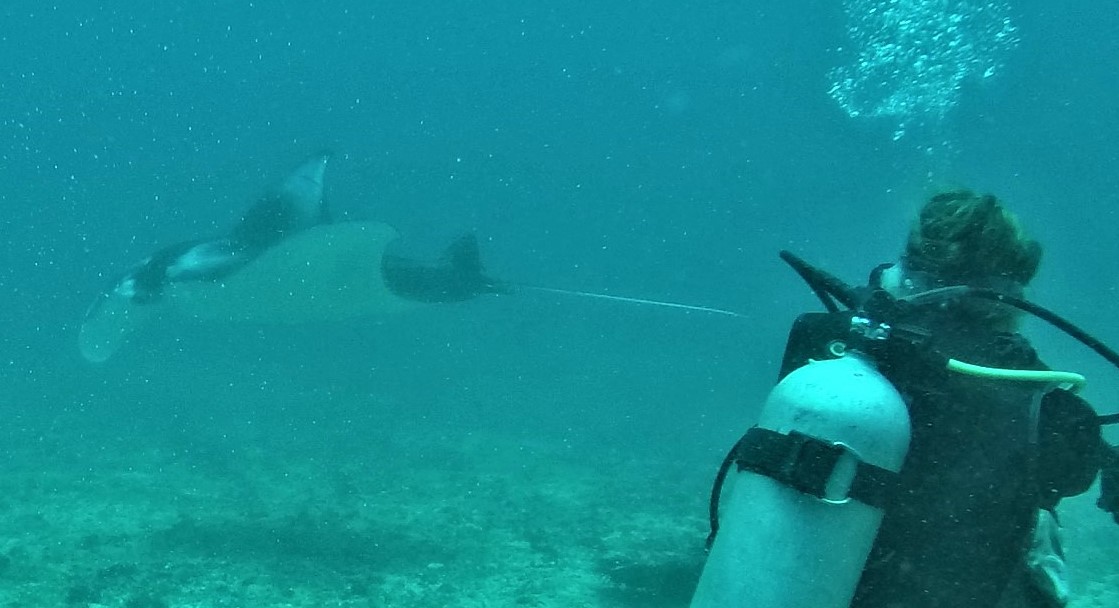Swimming with whale sharks in the open ocean has been on our bucket list since many years. So we traveled to the Philippines to find out if this is really such an incredible experience.
Our plane from Kuala Lumpur approached Manila crossing Manila Bay. From the air this city looks like yet another South East Asian metropolis: highways with stacked fly-overs, high-end suburbs, industrial areas, brown colored rivers discharging into the sea and shanty towns harshly contrasting with high rise business districts. We stayed three nights in a hotel in the Makati district, from where we explored the city. The colorful Jeepneys were the first we noticed when we walked between glitzy office buildings and modern malls like any other malls we have seen across the world. Compared with Kuala Lumpur, there were fewer motorbikes on the roads, instead more tricycles as soon as we ventured into the less wealthy parts of the city. We saw many uniformed police men, army and security people. Entering a mall meant we had to go through metal detectors. Before walking into our hotel, our taxi was checked underneath with mirrors and sniffer dogs searched for explosives. Next to our hotel there was an exclusive compound surrounded by a grey four-meter wall, black SUVs parked at the entrance, security guards with dogs. A nearby small roadside mall felt like the exclusive malls we used to visit in the northern suburbs of Johannesburg, also amid walled compounds, security checkpoints and buses taking children to international schools. We saw expat wives sitting in Starbucks, next to a western bakery, supermarket, delicacy shop and beauty shop. Déjà vu.
Next to a big four story modern western style mall we saw a shanty town with houses made of bamboo, plastic sheeting’s, concrete blocks or wood, the air thick from the dust coming of the unpaved alleyways. People squatted in wooden and tarpaulin shacks on dirt slopes and underneath bridges. We saw long queues of people standing in front of seafarer recruiting agencies and overseas employment agencies. 10% of the total population works overseas and sends their remittances back home, like our own domestic helper in Kuala Lumpur and the thousands of Philippinos we worked with in the Middle East. Our taxi driver told us that his family lived in country side and he drove home every month to bring them the money he earned here in Manila. With a daily income of US$ 4 he struggled to provide for his family with three children.
Intramuros is one of the very few tourist attractions this city has to offer. This 17th century fort was the first permanent settlement of the Spanish colonists. The construction looked very similar to the Cape of Good Hope Fort in Cape Town, not surprising it was constructed in the same time period for the same purpose: defend this strategic location against the enemies. It has massive walls, parapets, moats, dungeons, rampart cannons, watch towers. Not very well restored, some structures are crumbling, some still not finished. The Spanish colonial era Metropolitan Cathedral in the middle this historic part of the city, was rebuilt eight times after being destroyed by fires, wars and earthquakes. It's multi-layered arches in the facade gave it a massive appearance. Like other churches and edifices we would see in the Philippines, inside its paintings and sculptures were brightly colored, with simple symmetrical designs. Statues of the Virgin Mary were glaringly dressed up for different occasions.
With a clear blue sky and a scorching 36 C temperature, Francien and I enjoyed a cold beer on a terrace in the Manila port, watching two American warships sailing out of Manila Bay. It reminded me that tensions are high with China about militarizing the South China Sea. In fact, when we flew across the South China Sea we saw the Spratly islands, mere coral reefs just sticking out of the ocean, a few hundred kilometers of the coast of Manila. On a number of those tiny islands China is building military installations to expand it's influence in this region. But the greater influence of the Americans in this part of the world showed: American fast-food chains everywhere in the city, bill boards along the highways and the massive embassy of the USA dominating the shoreline overlooking Manila Bay. The American War Cemetery Memorial, prominently located on a hill overlooking Manila, commemorates the 17000 American soldiers killed and 50000 still missing during the liberation of the Philippines from the Japanese during World War II.
After two days in Manila we flew to the city of Legazpy. There we took an 18-passenger-seater express van to Donsol Bay, our final destination. The country side was covered with coconut palm trees. On the roads the people dried the rice they just harvested from the fields along the road. Unlike in Manila, here we saw few cars, instead people used bikes and tricycles (motorbike with attached sidecar) to get around. People lived in wooden houses on stilts with palm frond roofs. The homes were squarish and shaded by the palm trees. Terraces and cattle pens were made from bamboo. They collected water from hand operated well pumps. As we passed the small settlements on the windy road we saw roosters in cages, market stalls, children playing, men sleeping in hammocks, tricycles parked and dogs roaming around. Meagre cows and pigs scavenged between the mango and banana trees. We disembarked the van at the bus terminal in Donsol Bay and took a tricyle for the last five kilometres. Francien and I sat in the sidecar and one other passengers sat behind the driver on the bike. It was girl returning to her family after working the last two years as a nurse in Denmark. She could not wait to see her family. We stopped in front of her house and when she got out, all neighbours came out to welcome her. It was heart-breaking to see how happy she was to visit her family again. Later we would learn that a girl like her earns overseas 8 x the money she would earn in the Philippines.
In Donsol Bay, a fishing village of 5000, everyone seemed to know each other. After three days people greeted us with ‘sir Frank’ and ‘mom Francien’. All the men lived of the sea and during the monsoon, when fishing is not possible due to rough seas, some will move to Manila to find a seasonal job. Here again, 10% of the men work overseas, mainly as seafarers.
In Donsol Bay our few fellow visitors were in their thirties, travellers (some up to 9 months), not the luxurious types, staying in hostels, seeking the outdoors.
One afternoon Francien and I went to see the weekly cockfighting. Outside the arena we watched an official fitting ten-centimetre-long curved razor-sharp spurs to the claws of the fighting roosters. Inside the covered arena there were around 150 excited foremost male local spectators. Most men bet on the roosters, shouting and hand signing before each fight. Each fight took less than one minute, the losing rooster badly injured, not dead (yet). When we walked out after seeing a couple of fights, we watched a ‘doctor’ squatting outside the arena, trying to stitch wounded roosters. This is a centuries old tradition, used to be practiced all around the world and still legal in South East Asia. Here it is still an important part of a male dominated culture, a way for the men to show their strength.
In the early morning we pushed our Banca boat (wooden double outrigger boat) from the black sanded beach. Two locals climbed in the four-meter-high masts and started looking for dorsal fins sticking out of the water. Three days in a row we spent the mornings on the ocean. It took up to two hours before we would see any sign of a whale shark, but yes, we did encounter them! Each time the Banca would manoeuvre ahead of the path the whale shark (Butanding) was expected to take. As soon as we saw the dorsal fin breaking the surface of the water, all six snorkelers on board would jump into the water and swim around the biggest fish on earth. It all took less than one minute, because the Butanding would dive down again beyond the reach of the snorkelers.
Each time we were less than two meters away from this truly majestic swimming animal. We estimated them to be 8 – 10 meters long. Although they appear to swim very slowly, keeping up with them was very hard. As sun rays streamed through the crystal-clear water, the different hues of blue contrasted with the dark massive body of this animal. Its shear size was really impressive.
One day I joined a group of scuba divers on our way to a sea mountain called ‘Manta Bowl’, looking for manta rays and maybe more whale sharks. It was a trip with a remarkable ending. On our way out, we saw flying fish escaping our Banca. A pod of around 50 dolphins all of the sudden appeared from nowhere, encircled our outrigger for a few minutes and then disappeared into the depth of the ocean. In the middle of the open ocean our GPS indicated that we were straight above the Manta Bowl, a sea mountain raging up from the 80-meter-deep ocean floor. We descended 23 meters and saw indeed what we had hoped for: a four-meter-wide manta ray majestically swimming around us while we kneed on the bottom.
But then came the surprise. Just after we surfaced, a ten-meter whale shark swam around our boat. I could see both dorsal fins pocking from the water and the characteristic yellow/white spots were clearly visible. I jumped back in the water again and saw the fish swimming straight toward me. Its mouth was one meter wide! Spectacular. I saw its huge gills and six Remora fish swimming underneath this giant plankton eater. I toughed its tail! It was curious and kept circulating our boat. I swam next to it about two meters away for a few minutes, taking pictures with my GoPro until it disappeared in the darkness of the deep ocean. It was a very calming experience, because it moved slowly, gently, even gracefully.
Woow, swimming with these whale sharks in the middle of the ocean made us feel tiny and vulnerable. The few animals we swam with roam the tropical oceans of the world and we know little about them. If anything, seeing them diving down into the depth of the ocean was a fascinating sensation.
Legazpy airport with the Mayon volcano in the background
Time had come to return to Kuala Lumpur. On our way back we drove through Legazpi on the foothills of the Mayon volcano. This 8000 feet high volcano is perfectly cone shaped. The volcano is very active and the last eruption happened in January 2018. We saw belching smoke coming out of its top, a rather intimidating sight. In the local Calwaga park we walked between the remains of a bell tower, left from a church covered by sand and rock as a result of an 1814 eruption which killed more than 10000 people. For good reasons the people here were afraid for each new eruption
We learned that after this last eruption, no whale sharks had been spotted for a couple weeks. The vibrations of the eruption warned them of imminent danger, but they did return. And Francien and I were privileged to experience these endangered animals in their natural habitat, a rather humbling experience.


